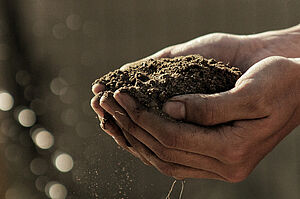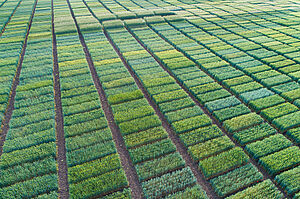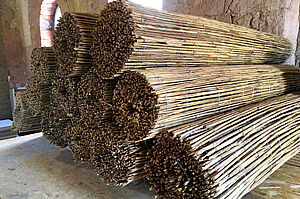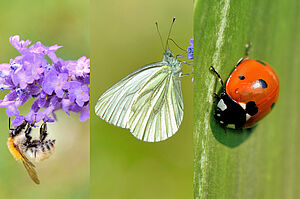Inhalt: Research activities
The Julius Kühn Institute conducts research and development in the following areas as a contribution to climate change mitigation:
Increasing carbon sequestration potentials
Vegetation and soils can store large amounts of carbon. However, as a result of deforestation, biomass use, drainage of peatlands and other changes in land use, this sequestered carbon enters the atmosphere as CO2 and contributes to the global climate crisis. To counteract this, measures such as building up humus in the soil or increasing the carbon sequestration potential of trees are necessary to sequester carbon from the atmosphere and promote their function as carbon sinks.
Projects
- CliMax
Maximising the carbon sequestration in urban trees: Developing knowledge and tools for climate change mitigation and adaptaion with multifunctional urban green infrastructure - KlimaFFolgen
Exploiting climate protection potentials through improved crop rotation design - German-wide potential analysis and development of a plot-specific decision support system - KlimaGetreide
Evaluation of the potential of perennial cereal cultivation for carbon storage - KoBoS
German-wide spatio-temporal modelling of carbon contents of agricultural soils through an integrative analysis of satellite image time series and geodata - SORGHUM
Increased humus production through the cultivation of sorghum in Germany as an active contribution to climate protection - WurCel
Humus build-up through more roots
Improving resource efficiency, incl. reduction of nitrogen (N) surpluses
The development towards climate-friendly agricultural production means achieving high and high-quality yields with minimal resources, such as soil, water and pesticides, and with the least possible strain on natural resources. Breeding progress, optimized fertilization that corresponds to the actual nutrient requirements of the plant, or even early detection and defense against storage pests can make a significant contribution to the increase and stability of productivity and efficiency in crop production systems.
Projects
- AVoiD
Preventing stored product pests in Germany - CaberNET
Assessing the carbon footprint of wine production in Germany to identify additional climate change mitigation potentials in viticulture - KlimaN
Yield development and optimised N fertilisation in a changing climate - KlimZucht
Identification of the future breeding potentials for more climate protection in crop production - Assessment of the contribution of breeding progress to the reduction of the carbon footprint - NORA
Nitrogen optimised rapeseed to reduce greenhouse gas emissions - PRoKlima
Optimisation of the potential of semi-dwarfs in rye for increasing the climate protection performance of cereal crop rotations
lasting reduction of greenhouse gas (GHG) emissions, including development and implementation of alternative use options and methods
Recent sources of agricultural emissions, such as drained landscapes, livestock management, and production processes, offer great potential for greenhouse gas (GHG) reduction and prevention. The challenge is to identify and harness alternative approaches and methods to reduce GHG emissions without compromising farm and business economics. Research on and development of alternative use options and methods therefore makes a significant and sustainable contribution to climate change mitigation in the agricultural sector.
Projects
- HoFaTo
Production and use of wood fibre as a peat substitute - KLIMAtiv
Climate-neutral fumigation processes and alternative treatment methods for the export of round timber - MOCOR
Economic and ecological potentials of paludiculture on rewetted peatlands for climate change mitigation - TRIP
Greenhouse gas reduction through innovative breeding advances in alternative plant protein sources - WAKS
Rewetting of agricultural water bodies as an emergency climate protection measure
Improving biodiversity
The preservation of biodiversity represents a crucial prerequisite for success in climate change mitigation and adaptation to the consequences of climate change. Insects play an essential role in maintaining ecosystems and contribute to environmental health. At the same time, the expansion of renewable energies is becoming increasingly important, as they can contribute to the reduction of GHG emissions in a sustainable and long-term manner. It is essential to implement these climate change mitigation measures in an environmentally sound manner that is consistent with habitat and species conservation.
Projects
- Solarnützlinge
Potentials for beneficial insect promotion in agri-photovoltaic systems




